One more (last?) column about the long-gone diesel truck

Having written about the purchase of the 2008 Silverado 3500HD duallie Duramax diesel, the de-mousing of the truck, the eventual sale of the truck, and missing the truck once it was gone, you wouldn’t think I could get another column out of it. And you’d be wrong. It’s like the truck equivalent of the Hanukkah menorah—it burned for not one article, but eight.
One last time for those in the cheap seats: I bought the 29,000-mile truck from my former employer when they largely abandoned it with a building closure. Mice had gotten into it and their excretory excesses in the truck’s headliner made for very dramatic photographs of its deteriorated condition. Since it was my former geophysics work vehicle, I knew bloody well what it was, but no one else left in my division of the company did—it was just a line on an inventory sheet for which they balked at paying monthly storage fees. So I made them an insanely low offer. They accepted it, I brought the truck home, largely de-moused it, and had the biggest, baddest tow-vehicle-stuff-mover on the planet.
But I never really used the truck the way I imagined. I towed a few of my own cars back and forth to storage with it but never used it to drop everything and run off, buy, and drag home a barn-find prize before someone else got it. It began to feel ridiculous owning a super-duty vehicle like this when most of its use was running cardboard boxes down to the local recycling depo, and its awful turning radius and low visibility from the wonderful-when-you-use-it-but-in-the-way-when-you-don’t utility body made it feel like using an assault rifle to hunt squirrels. Plus, the combination of the remnant rodent smell, the poor gas mileage, and the high cost of diesel meant that we never used it as a “family vehicle”—it only left the driveway if I needed to move something, which wasn’t often.
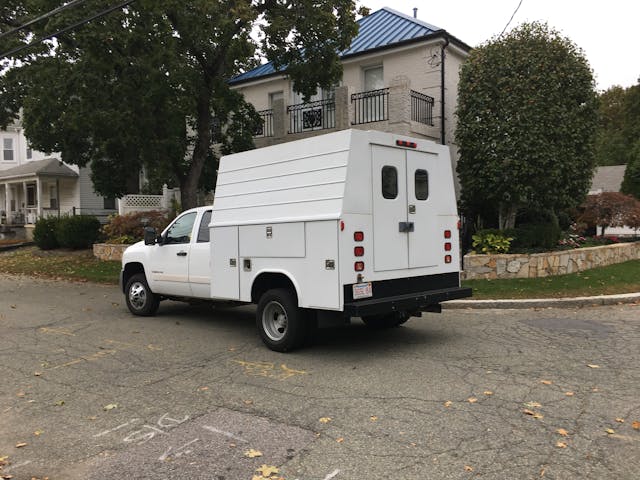
So I sold it. All in (purchase, taxes, tires, replacement of the stolen catalytic converter, and lift pump), I had maybe six grand in it, and I sold it for $30K. It is the only time in my life I’ve ever made windfall money on a vehicle. I don’t regret the decision one iota (my bank account thanked me profusely), but almost as soon as the truck was gone, I felt its absence, both in terms of hypothetical towing as well as not being able to do trivial things like run out and pick up a free Tempur-Pedic bed.
The surprising thing is the degree to which I’ve waffled on replacing it. I’m usually very surgical about this sort of thing. I analyze a need, make a decision, and act quickly on it, which generally translates into picking up the cheapest version of what’s available (hey, all this content doesn’t just generate itself). Initially I gravitated toward looking at Honda Ridgelines in the $4000 range, but then the whole thing ran into molasses.
It’s taken me a while to grok why I’ve been so slow on the uptake. I think I’ve got it figured out. And hence you get one more piece on my curious thought process.
Here’s the story. I’ve long joked that a car person needs seven cars. They are: Your daily driver, your spouse’s daily (which is also probably the family hauler), the pampered classic, the tow monster/beach truck, the track go-cart, the ragtop roadster for sunny Sundays, and whatever the current project car happens to be. Makes sense, right?
In truth, that slot for the tow monster/beach truck began as 100 percent beach truck. For almost 30 years, I took my family on a big beach vacation on Nantucket. You need a four-wheel-drive vehicle to reach the fishing spots on the peninsulas of Great Point and Smith Point, so I got into the habit of buying a beat-up Suburban in late spring (nothing comes close to the people-and-cargo-carrying capability of a seventh-generation ’Burb, though I did eventually roll into eighth- and ninth-gen vehicles), doing whatever maintenance was needed, taking it on vacation, selling it when it was over, and repeating the process the following year. Why not hold onto the truck year-round? Well, insurance costs money, driveway space was at a premium in those days, and selling one of our other cars was out of the question because neither my wife nor I wanted to daily-drive something that big. The realization that I could also use the Suburbans to tow came when my garage finally got built in 2006—I suddenly had both garage space and driveway space for more cars, and their numbers began their steady climb.
Not long after that, my old engineering job bought the Silverado 3500HD work truck, so if I was between Suburbans and needed to tow something, it was available for occasional loan. In later years, I did begin keeping a ‘Burb registered year-round and began to appreciate how useful it was if we needed to, say, go down to The Sears Outlet and buy a scratch-and-dent refrigerator, and obviously for smaller stuff-moving like buying Recaro seats or sets of wheels and tires.
The point is that I was never towing a travel trailer, nor was I a track junkie who had a dedicated need to tow a race car every weekend. The Suburbans could haul the U-Haul auto transporters with small to mid-size BMWs on them, and that was fine. I never evaluated my towing needs and went out and researched and purchased a dedicated tow vehicle—it was always either the works-fine Suburban beach vehicle or the borrowed massive-overkill work truck.
So, with that history, what is it that I want NOW? Is it another truck like the one I just sold—something specifically for towing cars and moving stuff and with mileage so low that it’s likely to be reliable for years? Having bought and then sold the Silverado, the odds that I’m going to find another duallie diesel tow monster—with less than 30K miles and a utility body that would hold three refrigerators—for $6000 are less than zero.
No, it isn’t that. If I wanted that, I wouldn’t have sold the truck.
Is it another Suburban, something that i can use to take eight people out onto soft sand and still have room for suitcases and coolers behind the third row seats? No, it isn’t that either. The big family beach vacations are long over. I have no need to haul that many people and cargo on sand or asphalt.
Or is it something more Swiss-army-knife-like, something I can use as a daily driver but also tow with? Maybe, but I tried that before—with the triple-unicorn 2004 BMW X5 six-speed with both the sport package and the tow package that I bought shortly before the pandemic, and I was glad when I sold it and went back to daily-driving my 2003 E39 530i sedan.
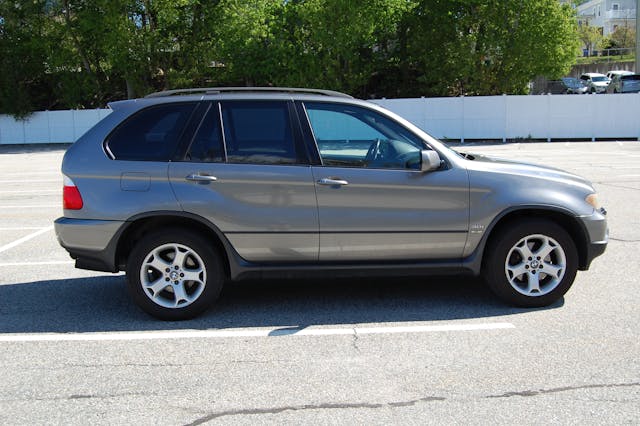
Although the X5 experiment failed, it was instructive to look back on what I wrote about buying it. I’d forgotten that one of the things that kicked off the purchase was this comment from my wife: “I miss having a Suburban. The stuff we used to be able to pick up in those things was great.” However, the last Suburban I owned had brake-line rot issues that plague late-1990s through mid-2000s Chevy trucks, and most of the cheap ’Burbs I looked at had the same problem. I briefly looked at inexpensive high-mileage Toyota Sequoia and Nissan Armada SUVs, but I found that they have the same frame and trailing arm rust issues as their Tacoma and Titan truck brethren.
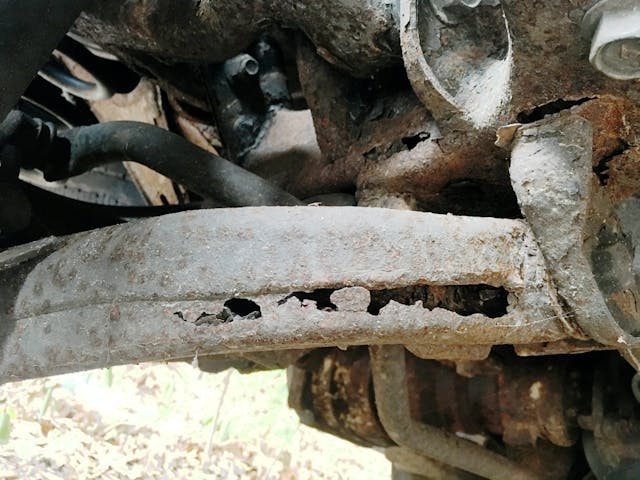
It was that combination of events that sent me to looking at BMW X5s. The V-8s 4.4-liter vehicles are better tow vehicles than the straight six 3.0s, but the sixes were available with a stick, though they’re rare. It was the lightning-strike event of finding a six-speed car that also had both the tow package and the sport package; its interior looked uncannily similar to my 530i. The car had 270,000 miles on it, but fact that it had lived most of its life in North Carolina and Florida, was about 10 miles from me, had had a ton of recent maintenance, and had a $4000 asking price got me to go see it. In person, it looked practically new inside and out, and I snagged it for $3300. In other words, the whole exercise was more “How can I pass up this cool vehicle at this price?” than it was a well-considered solution to a towing problem. Plus, at that point I still could borrow the work truck if I needed it.
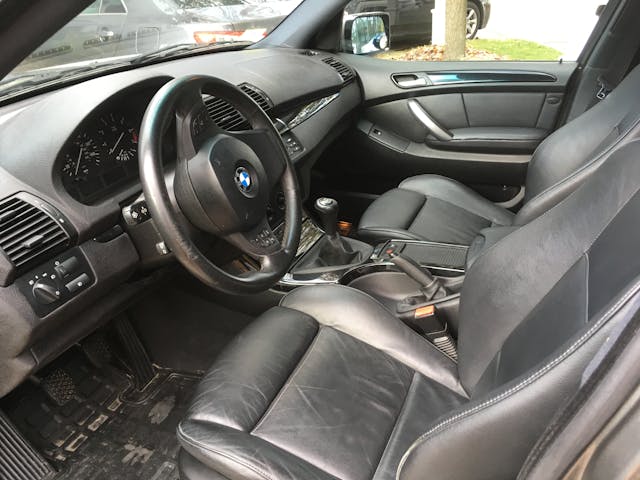
If you look above, you’ll notice that what I considered, looked at, and bought were all SUVs. No pickups. That’s not accidental. I’m really not a truck guy. I don’t need a truck. I don’t have repeating needs to move dirt or bricks or gravel or construction debris or 4×8-foot sheets of plywood or drywall. The original vector into towing wasn’t a need to move stuff—it was a need to move people.
Once I understood why my focus on what could replace the Silverado 3500HD was cloudy, I began to think of it another way. My daily is the 530i, which is a rear-wheel drive vehicle. My wife’s is a front-wheel 2013 Honda Fit. Both cars are shod with snows on all four corners in the winter, and thus are fine, as we live in suburban Boston, not northern Vermont. If there’s an honest-to-goodness Biblical snow event (as opposed to the local weather report’s OH GOD RUN FROM THE KILLER SNOWSTORM hype), we wait to go out until our son has shoveled the driveway and the streets have been plowed. It’s not hardship. So on paper it’s a forced fit to say we should own a big tow-capable 4WD SUV so that we’d have something “safe” to drive in winter weather, much less gas one up year-round as a daily driver.
However, maybe the X5 experiment wasn’t a failure after all. I work from home, and my wife is retired, so we don’t have the commuting needs that might tip us toward a more all-weather-capable vehicle. However, my wife is a passionate quilter, and attends regular quilting and sewing events, including winter retreats up in New Hampshire. If a storm moves in, I would feel better with her driving something with 4WD (and yes, something larger than the little Honda Fit). If I bought a truck, she’d be unlikely to drive it, but a mid-size SUV? Maybe that’s the tack to take. Find something like a facelifted first-gen Toyota Sequoia. That’s small enough that she’d feel comfortable driving it, big enough to put stuff in without being Suburban-sized (let’s face it—I’m not muscling any more Sears scratch-and-dent refrigerators into and out of vehicles), and tow-capable without being a tow monster. Maybe I can thread the needle and find one without the frame rust, without crazy mileage on it, and in the same price bracket that the X5 was (I often joke that I do my best work around $4000).
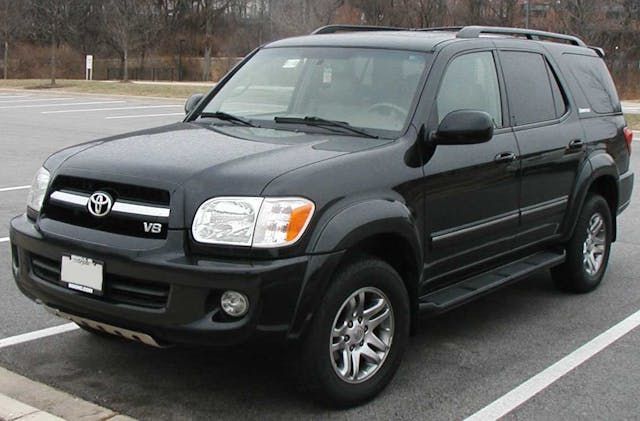
I’m a man with a plan. We’ll see how it plays out.
***
Check out the Hagerty Media homepage so you don’t miss a single story, or better yet, bookmark it. To get our best stories delivered right to your inbox, subscribe to our newsletters.


I have an honest to gosh truck a 1939 Dodge flathead 6 cylinder which is both Art Deco beautiful, reasonably reliable as before me the owner converted it to propane works perfectly running to in town rental jobs and Home Depot, has plenty of low end torque, I can change the clutch by pulling the transmission from the top, with the rear motor mounts still in place, and it cost me a little over $200 to change the head gasket including the machine work!
I guess it doesn’t have car play and the ride is a bit rough and you are rolling the dice driving 50 MPH or more.
Still lots of fun and always a conversation starter at the hardware store.
A great miracle indeed! And it all sounds so familiar… reminding me of the similar reckoning and calculating of use-cases, reliability predictions, and pleasure-index estimations that I put into vehicle purchases. Last summer I sold a newer VW tdi wagon (Golf in Canada, Jetta by you) for more than I paid for it in 2019 (though I did not actually make money because I had the DSG service done and timing belt replaced), and then set out plugging the ‘sporting car’ and ‘wet season car’ (winter beater for you Easterners) holes with a portion of the proceeds. The sporting car had to be RWD and standard shift; the wet season car had to be a wagon. Now I have a 2006 C230 coupe manual V6 and a 2007 Passat 2.0T wagon, and still have half the proceeds of the Golf sale left over for house painting this summer.
I always hanker after ‘Burbans — our 1976 3/4 ton, black, on propane, with a 454, was one of my favourite vehicles ever, and my wife’s too, until it rotted out — , but Canadian gas prices and street parking issues keep me away. And at 61, I am unlikely to be hauling around fridges or hot water tanks as I used to do. If camper vans had not got so pricey, I might get one again. Maybe I’ll tow a little travel trailer with the Passat. But I never need another mid-sized SUV again either (loved my six-speed X3, which was a lot like a bigger AWD 3-series wagon, but its uses were too limited for the gas it used). It’s cars (or, on nostalgic days, ‘Burbans) all the way for me now.
I guess I’m in the opposite position, I need to haul stuff more than people so my extended cab, long bed half ton pickup (all 20′ of it) actually suits my need to haul bulky things like sofas, lumber, a very small hot tub and an occasional rented trailer. My 2002 F150 was $3000 in early 2020 and has been a very useful tool and backup car apart from the wrenchfest of replacing the heads to permanently fix the launching spark plug issue.
The answer is simple- a BMW station wagon. The BMW X range are still glorified trucks, in their weight, proportion and fuel (lack of) economy. I want a daily driver that’s attractive, sporty, and still capable of suburban utility duties. If in fact I need to move something REALLY big, there’s always the Honda Acty van.
Bought a 328iT five years ago, and never looked back. Still kicking myself over the E46 stick touring in red that was an honest to God BMWNA executive car. But, in 2005, the Jaguar X Touring beckoned. Such a pretty car! Kept it 12 years, a record. Went from a lease, to a CPO purchased for 0% interest, it finally got sold when the extended (and extensive) warranty ended. Pretty as she was, no one should ever own on out of warranty Jaguar. I sold it on Ebay for a good price, and the buyer flew out and drove it to Wisconsin with two plugged converters, and a failing fuel pump. He made it.
Yeah, but they certainly don’t have 6000-lb towing capacity.
The Mercedes W211 and W212 wagons will get you 2100 kg (4629 lbs).
Too late now, but sell the box on the back of your diesel truck and build a flatbed. Or find a dually pickup bed and add a cap if you need weather protection.
We keep a 2014 Tacoma V6 4WD around even though we don’t use it much. It tows 6500 lbs., goes anywhere at any time, only needs tires and oil to be happy, and isn’t terrible to drive. I commuted 80+ miles each way in it for a couple of years in fact, and it was okay. Ours is a base model but you can get fancy ones if you want. They aren’t 4 digits price-wise but they won’t be 4 digits in 10 years either. Keep fluid film or similar on the underside, and then just drive it.
Great story. I too made the world’s greatest truck purchase. A neighbor owned a 2005 Ford F250 Diesel with all the bells and whistles. He was trading it in and mentioned it to me. I made a 1 second decision and bought it at my front door.
Some are going to say that the 6 liter turbo diesel was a plagued engine but they are wrong. If you remove the oil cooler every 100k and throw it away as regular maintenance you will never over heat anything else. If you don’t turn up the boost then the head gaskets and head bolts last forever. It’s a great motor and doesn’t need DEF fluid.
I gave Jim ten grand for the truck and bought a $700 snow plow for the front. For the last ten years I have towed my race car, carried ungodly amounts of weight and plowed my own parking lots that used to cost me $4,600 per year when others did it. At this point the truck has saved me thirty grand over it’s cost and it’s got another 10 years left in it. I don’t know how I lived without it!
Had a Ridgeline for 11 years Rob, was very happy with it. Comfortable inside, decent bed, ok gas mileage, all wheel drive and was great in snow. Odd veh for a car guy but worked for me.
Hi Rob, luv the seven car list. Fortunately or unfortunately, I am on that path. However I do have one suggestion to maybe trim down the expense side of that list. My daily driver is a 2015 BMW 435 xdrive convertible with the M package. It nicely fits both your daily driver function and is a remarkably fun sunny day, top down driver. And the xdrive with good tires makes it an amazing snowmobile for those of us in the North. Thanks for the entertaining piece.
I couldn’t recommend anything better than a Toyota Land Cruiser. I’ve owned them for years and it is the ultimate do everything vehicle with reliability like no other.
How about a mid-size crossover with the tow package – maybe an Enclave or Acadia, or an Explorer or Durango? Since you obviously don’t worry about a vehicle showing high-mileage, you might get a well-cared-for high-mile one for a reasonable price.
I think you’re going about this all wrong. All of your requirements sound like you want a long-roof to me. A Mercedes W211 4Matic wagon isn’t hard to find, for cheap.
Your story put a smile on my face. Currently, my Girlfriend and I own more cars than we ever thought possible. Four of them were mine, until I gave the faithful ‘90 Volvo 740 wagon to my son for his first car. Watching him drive away in the dark after a day of completing a punch list on the car, made me sigh. In 2011, I bought a brand new high top Mercedes Sprinter for a work truck. I am a plumber. I had been working out of a Ford Aerostar with a pipe rack through bolted to the roof. It had the electronic four wheel drive and although it was overloaded and looked ridiculous, it never left me stranded and was a solid rig. I used to use it as a spare while the new Sprinter had four or five EGR valves replaced and the glow plugs extracted. I let the Sprinter go for way too cheap and still wonder if I should have kept it. My dream was to plumb until I could convert that van and travel in it. Later, I bought a ‘98 1 ton Ford Club Wagon with all the seats torn out. This one has also never left me stranded, although filling it at the pump causes me to sigh as well. It tows anything and I have a vision for it’s future too. For work trucks, I like them low, so you don’t have to climb so high to get your stuff all day long. I miss every car I ever owned. Cheers.
My vote is for the Sequoia. I have owned many Toyota small trucks,aT100,a Tundra and a Land Cruiser. Most of them have been from the south because I live in Cleveland with similar rust issues to Boston. The other vehicle I would consider is the 2007 thru 2013 MDX. I am on my third one at this point and feel like they make good tow vehicles. I usually buy in around 120k and keep them till 240k. I own a small BMW repair shop and have always liked the Toyota, Honda vehicles for trip cars.
Many rust belt first gen Tundras, and I think Sequoias, got full frame replacements in the 2010s under Toyota’s recall. If you can get a VIN from the seller you can plug it into Toyota’s owner’s site and find out.
I bought a 290K V8 4WD 2001 Tundra in late 2020 for $2500. It had a full frame replacement in 2012 at 160K. I imagine that meant a lot of new hardware, brake lines and more at the same time. The frame still looks great.
I’ve put new front and rear springs, front shocks, brakes all around including front calipers, timing belt, front axle actuator, a steering rack and tires in it, all DIY. I’ve got maybe $6K in it, but it’s a very reliable beast at this point. It just crossed 314K.
Sadly, if I had to do it now, the initial purchase is likely to be at least $5K as prices are up considerably. I saw a 2004 with a rusty frame and 265K advertised for nearly what I have in my truck
I am so glad the subject of your truck sale came up again! I had typed a “what were you thinking?” email when you sold the truck. Then for some reason, I couldn’t get it posted…maybe you were tired of that question? Anyhoo, no use harping on that. I wish wdb’s idea of a cargo box/flatbed swap was floated around at the time the time you considered selling because you would have been flush money wise selling the old box and buying something different cargo wise.
All that said, AMEN to the seven vehicle rule! I will begin preaching it to my better half…we’re over halfway there now…Less than a year ago, I reduced our fleet by one SUV, a six passenger 2018 Dodge Durango R/T, you could haul 6 people or a ton of stuff, take your pick. Just a gorgeous vehicle, a pleasure to drive.
I also traded our 3/4 ton diesel Chev Silverado Crew Cab (6.5 box)for a new 1/2 Silverado Crew with the newer 6cyl diesel. It’s not top of the line but it’s optioned with all the creature comforts and I put a lockable tonneau cover to sort of compensate for lack of SUV cargo space.
The downsize works for the most part, funny enough, the cargo bed is 3 inches longer than the 3/4. Just drove down and back from the Greater Toronto Area to Daytona, Florida. Handled like a champ.
Based on what you have written about your “needs” truck wise, I totally get you leaning towards the SUV. I am just from the school of if you have ever owned a pickup, you will always own a pick up. I type this as I look at a picture of my old Durango…*sigh*…